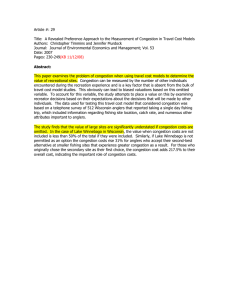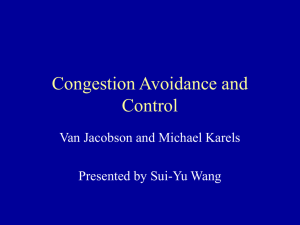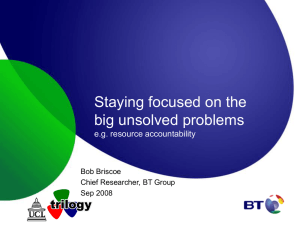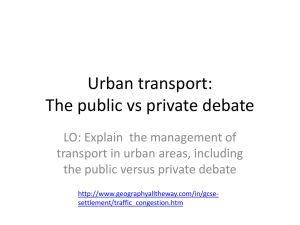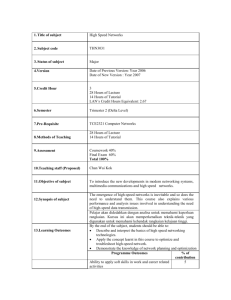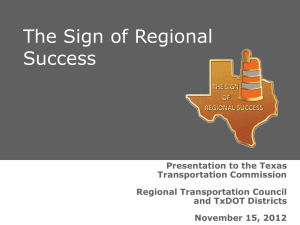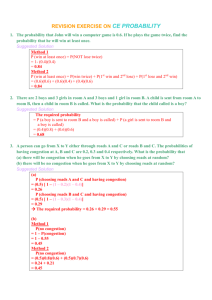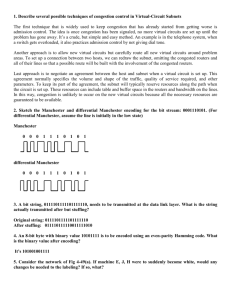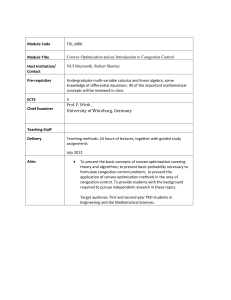A Binary Feedback Scheme for Congestion Avoidance in Computer
advertisement
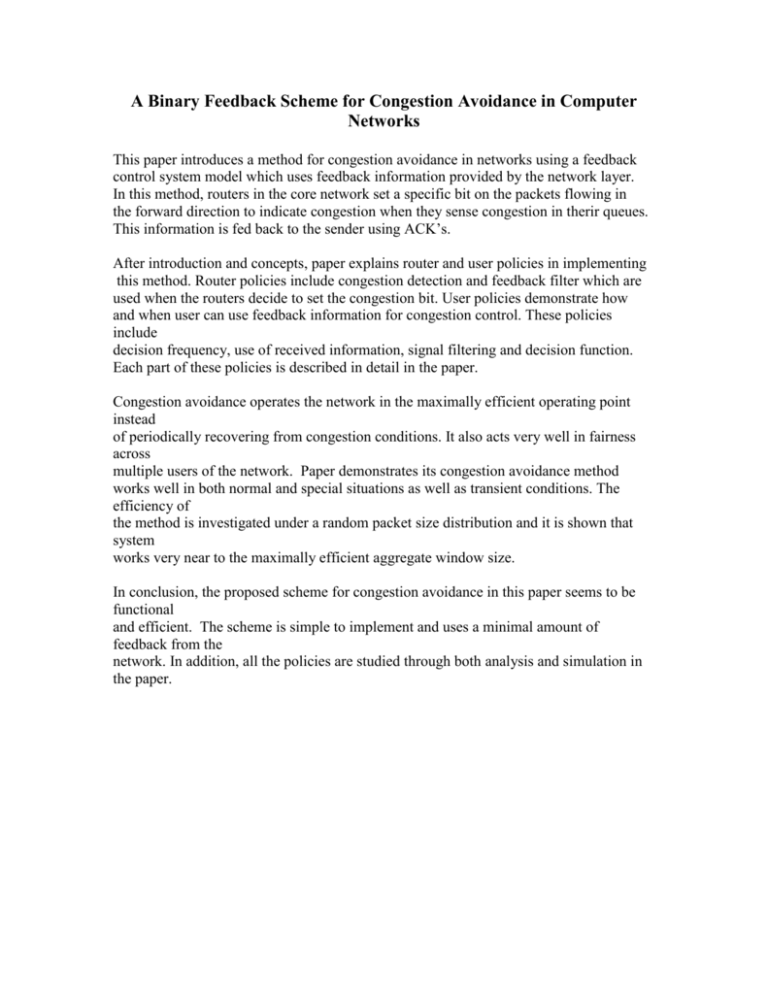
A Binary Feedback Scheme for Congestion Avoidance in Computer Networks This paper introduces a method for congestion avoidance in networks using a feedback control system model which uses feedback information provided by the network layer. In this method, routers in the core network set a specific bit on the packets flowing in the forward direction to indicate congestion when they sense congestion in therir queues. This information is fed back to the sender using ACK’s. After introduction and concepts, paper explains router and user policies in implementing this method. Router policies include congestion detection and feedback filter which are used when the routers decide to set the congestion bit. User policies demonstrate how and when user can use feedback information for congestion control. These policies include decision frequency, use of received information, signal filtering and decision function. Each part of these policies is described in detail in the paper. Congestion avoidance operates the network in the maximally efficient operating point instead of periodically recovering from congestion conditions. It also acts very well in fairness across multiple users of the network. Paper demonstrates its congestion avoidance method works well in both normal and special situations as well as transient conditions. The efficiency of the method is investigated under a random packet size distribution and it is shown that system works very near to the maximally efficient aggregate window size. In conclusion, the proposed scheme for congestion avoidance in this paper seems to be functional and efficient. The scheme is simple to implement and uses a minimal amount of feedback from the network. In addition, all the policies are studied through both analysis and simulation in the paper.

